-
四环素(tetracycline, TC)作为一种广谱抗生素,被广泛用于治疗和预防人类和动物的细菌性疾病[1],往往没有经过代谢,通过排泄物和肥料而排入环境中[2]。因此,TC在地表水中的浓度达到几十至几百微克每升,由于其生物毒性和易导致耐药细菌等原因,所以TC对生态环境和人类健康构成了潜在的风险[3]。另外,由于活性炭、聚合物树脂等多种用于去除TC的吸附剂多为粉末状,在实际净水过程中易造成损失,并且操作和重复使用非常困难。ZIF-8-壳聚糖复合材料[4]、MeOH-生物炭[5]、CC1.00-CB[6]和热活化膨润土[7],在其制备合成过程中具有高温、能耗较大、制作成本较高以及操作复杂等缺点。因此,需开发环境友好、可持续和具有经济性的吸附剂用于去除水中的TC。
天然木头是一种绿色环保、低成本的材料,并且具有独特的中空纤维结构,其已用于水处理吸附膜的研究中[8-10]。另外,由于TC具有的酰胺羰基(HN—C=O)结构,可以与羧基(—COOH)形成氢键而被吸附去除[11],因此,使用—COOH改性木膜吸附四环素具有可行性。
木膜中的纤维素含有大量易改性的羟基(—OH)[8],可与无毒柠檬酸进行酯化反应,从而将—COOH引入木质纤维素结构中[12]。但是,由于木膜中交联酯键等结构的存在,使得柠檬酸不易与纤维素上的—OH进行反应,因此,在改性过程中,需将木膜进行预处理。在预处理方法中,由于NaOH溶液的再利用和再循环性能,因此,常压下使用NaOH溶液对木膜进行碱预处理是一种经济环保的方法[11]。
椴木(basswood, BW)是一种纤维素含量非常高、具有规则的孔道结构、并且是最便宜的木材之一,有大量的剩余废料[12]。本研究报道了通过采用不同浓度的碱液和CA对椴木木膜进行改性,将—COOH引入至木膜的纤维素结构中,用于吸附水中的TC,通过对吸附前后的改性木膜进行红外表征,阐明了在不同pH下,—COOH与TC的相互作用机制,以期为设计具有环境友好、经济和有效的水处理膜材料提供有效的策略。
全文HTML
-
实验试剂:盐酸四环素(C22H25ClN2O8)购自Sigma-Aldrich,盐酸(36%~38%)、氢氧化钠(NaOH)、柠檬酸(≥99.5%)和亚甲基蓝购自国药化学试剂有限公司,巴比妥酸(98%)购自Macklin,所有试剂均为分析纯。实验室用水为去离子水。
实验仪器:采用扫描电子显微镜(SEM,SU-8020,日立公司,日本)对木膜的微观形貌进行分析;木膜表面官能团信息采用衰减全折射傅里叶变换红外光谱仪(PerkinElmer UATR Two,美国);木膜的表面亲疏水性通过接触角仪(Dataphysics,OCA15EC,德国)测定;经研磨机(Nail AQ-180E,中国)将木膜磨碎后,采用Zeta电位分析仪(Malvern,英国)测定表面电荷;通过数字pH计(Mettler Toledo Delta 320)测定溶液的pH;使用回旋式振荡器(HY-5,中国)将椴木与亚甲基蓝染料充分接触后,用离心机(H1650,湘仪公司,中国)离心将椴木与溶液分离;采用紫外可见分光光度计(UV-2600,岛津,日本)测定亚甲基蓝的浓度。
-
制备改性木膜的圆椴木切片购自福建森林人木材公司。木片的厚度为5 mm,且吸附床体积(BV)为0.25 mL。
首先将椴木片用质量分数为6%盐酸预处理以除去可溶性无机盐和微量元素;然后将椴木片在质量分数2、4、6、8%的氢氧化钠溶液中于4 ℃浸泡12 h,溶液与椴木片的重量比为10,并用去离子水洗涤以除去碱性溶液;再将质量分数为80%的柠檬酸溶液加热至100 ℃,然后通过负压过滤使柠檬酸透过椴木片;最后,将椴木片浸泡在质量分数为80%的柠檬酸溶液中,于100 ℃条件下反应4 h,溶液与椴木片的重量比为5,反应4 h后加入一些冷水终止反应。将处理后的椴木片洗涤后在40 ℃条件下干燥24 h,得到改性椴木(x-BW)样品,其中x为NaOH的质量百分数。
-
根据ASTM D1926-2011《纤维素羧基含量的标准测试方法》中亚甲基蓝法测定原始椴木与改性椴木的羧基含量。在亚甲基蓝方法中,椴木样品用0.000 2 mol·L−1亚甲基蓝溶液处理,并用巴比妥酸缓冲液调节亚甲基蓝溶液的pH为8左右。
为计算亚甲基蓝的吸附量,配制浓度分别为4、6、8、10、12、14、18、20 mg·L−1的溶液,使用UV-2600分光光度计在620 nm的吸光度,对不同浓度的亚甲基蓝在620 nm处的吸光度进行线性拟合,即得到亚甲基蓝在620 nm处的吸光度标准曲线,结果如图1所示。
将椴木放入装有50 mL亚甲基蓝带塞烧瓶中,放入摇床中以15 r·min−1振荡,使椴木与亚甲基蓝染液充分接触,反应时间为2 h。反应结束后,用离心机以5 000 r·min−1离心分离15 min,取10 mL上清液于100 mL容量瓶中,加入10 mL 0.1 mol·L−1盐酸溶液,用去离子水定容,在620 nm处测定亚甲基蓝的吸光度,根据亚甲基蓝的标准曲线求出亚甲基蓝浓度值。测定的亚甲基蓝浓度的降低与纤维素的离子交换能力有关。
在0.000 2 mol·L−1亚甲基蓝溶液中,50 mL的50%吸尽率的样品在与羧基的离子交换中使用了0.005 mmol的亚甲基蓝。因此,每克纤维素M的羧基的毫摩尔根据式(1)进行计算。
式中:M为每克纤维素中羧基的含量,mmol·g−1;W为样品耗尽50% 50 mL的0.000 2 mol·L−1亚甲基蓝溶液所需要的质量,g。
-
如图2所示,将制备的改性木膜填充于过滤装置中。注射泵用来调节进水TC的流量。将TC溶解在去离子水或实际水中制备TC (2 mg·L−1) 水溶液。用0.1 mol·L−1盐酸或氢氧化钠溶液调节TC溶液的pH。将TC溶液以4 BV·h−1的流速通过木膜。当出水浓度为0.5 mg·L−1时,在室温下用无水乙醇以10 BV·h−1的洗脱速度进行原位解吸,然后将再生后的木膜在40 ℃干燥24 h以除去其中的残留乙醇。配制TC的去离子水和实际水的pH分别为8.1和8.4,TOC为0.58和2.80 mg·L−1;实际水中K+、Ca2+、Na+、Mg2+的浓度分别为1.8×10−5、1.6×10−4、7.5×10−5、1.3×10−5 mol·L−1。
1.1. 试剂和仪器
1.2. 改性木膜的制备
1.3. 木膜中—COOH含量测定
1.4. TC吸附测定
-
用扫描电镜观察了原始椴木、6-BW的表面形貌。如图3(a)和图3(b)可见,原始椴木内部结构包含许多平行和开放的三维孔道结构。由图3(c)和图3(d)可见,在6-BW结构中的三维孔道结构没有被碱-柠檬酸处理破坏。此外,孔道壁上具有微米级的颗粒,这是因为柠檬酸和水通过椴木孔道壁上的微孔与纤维素进行酯化反应而形成了TC的吸附位点。
-
如图4可知,与未改性前相比,改性木膜中与对称C—H拉伸振动相关的2 900 cm−1处的能带形状发生了变化,这是因为碱处理使原木的纤维素I转变为能够通过与柠檬酸发生酯化反应的纤维素II[13]。在改性后,原木在1 730 cm−1(C=O)处的峰消失,表明半纤维素和木质素之间的交联酯键被破坏[14]。当碱浓度由2%增加至8%过程中,改性木膜在1 724 cm−1处(酯羰基(O—C=O)或—COOH)出现振动峰,这表明—COOH被引入木膜结构中[14]。
-
由图5(a)可见,在不同pH条件下,改性木膜表面的Zeta电位均是负值。与其他样品相比,6-BW样品表面Zeta电位的绝对值最大,表明其中的—COOH的含量最高。通过测量水滴的接触角,以确定木膜的亲疏水性。由图5(b)可见,原始木膜和6-BW水平面上水滴的光学图形。原始木膜和6-BW的水接触角分别为122.7°和58.3°,表明碱-CA改性使得疏水木膜的表面表现为亲水性。这是由于水扩散和附着于改性木膜上的强趋势和高表面能[14]。改性木膜的—COOH通过氢键与水的相互作用比原木膜的—OH更有效。因此,有更多的氢键在改性木膜表面上形成。具有亲水特性的孔道有利于TC溶液的传输以及TC和改性木膜吸附位点的充分接触。
-
如图6(a)和图6(b)可知,原始椴木和改性木膜吸附50%左右的亚甲基蓝染料时所需的质量分别为0.075 g和0.06 g。由式(1)计算可知,原始椴木和改性木膜纤维素中羧基的含量分别为0.066 7 mmol·g−1和0.083 3 mmol·g−1。
-
由图7(a)可见,当TC出水浓度为0.5 mg·L−1时,2-BW、4-BW、6-BW和8-BW的有效过滤体积(effective filtration volume, EFV)分别为1 872、1 926、1 968和1 430 BV。6-BW与未改性的木膜相比,EFV提高了约48倍。此外,由于6-BW的—COOH含量最高,其EFV高于其他x-BW样品。由图7(b)可知,当x-BW的EFV为650~850 BV时,出水TC浓度仍为0 mg·L−1,x -BW的有效过滤体积是未改性木膜的26~34倍。以上结果表明,改性木模对TC的去除具有较好的性能。
-
TC是一种具有多种离子化官能团的两性分子,在典型的环境pH范围内主要以两性离子的形式存在[15]。TC可以进行质子化-去质子化反应,并根据溶解四环素的溶液pH呈现不同的离子种类[16]。所以,TC在不同pH下的存在形式如图8所示。因此,TC的化学性质受不同pH的影响,其吸附率也会受到溶液pH的影响[17]。
由图9可见,在pH为3.30左右,阳离子型TC(
TCH+3 )与两性离子型TC(TCH20 )的百分含量相等。TC可以通过Lewis酸碱相互作用吸附在改性木膜表面[18]。在pH为3.30~5.50时,无电荷的TCH20 占主导;在pH为5时,TC去除率最高。这是因为TCH20 与—COOH可以通过氢键作用被吸附在改性木膜表面[13]。当pH >5.50时,由于阴离子形式(TCH−或TC2-)增多,TC与改性木膜之间的静电斥力增大,TC去除率随pH的升高而降低[17]。 -
由于可重复利用性对木膜的实际应用至关重要,因此,进行了循环吸附-再生实验以测试6-BW的可重复利用性。如图10(a)可见,经过4次再生循环后,6-BW对TC的吸附率可达97%。由图10(b)可见,与第1次再生循环的样品比较,经过4次循环再生后的木膜对TC吸附去除的损失率仅有1.7%。这说明x-BW的可重复利用性较好。
-
实际水体中的溶解性有机物(dissolved organic matter, DOM)由于位点竞争和孔道堵塞,降低了吸附剂对有机污染物的吸附容量[19]。为此,本研究测定6-BW对实际水中TC的去除率,以考察低浓度DOM对TC吸附效果的影响。由图11可知,出水TC浓度为0 mg·L−1时,6-BW对去离子水和实际水样中的TC的EFV分别为839 BV和679.2 BV。与去离子水相比,在处理实际水样中的TC时,6-BW出水中的TC浓度略有增加。这也进一步说明改性木膜对去除水中TC的可行性。
-
由于阳离子型和两性离子型TC能够吸附于改性木膜上面,因此,将样品浸没于pH为3和pH为5的去离子水和TC溶液中,通过检测反应后木膜的红外,来研究阳离子型和两性离子型TC的吸附机制。由图12(a)可知,在pH为3的条件下,吸附TC后,6-BW在3 336 cm−1的峰向3 338 cm−1进行偏移,这是由于TC在3 350 cm−1的O—H/N—H伸缩波段被水在3 500 cm−1的O—H宽波段掩盖。这表明6-BW是通过Lewis酸碱相互作用吸附阳离子型TC。由图12(b)可知,当pH为5时,6-BW吸附TC后,在3 332 cm−1的峰偏移至3 326 cm−1,表明6-BW的羧基氢(COO—H)与作为H受体的两性离子型TC的官能团之间形成氢键。此外,与—COOHs相关的1 724 cm−1处的峰均在pH为3时发生变化,但在pH为5时没有变化。这是因为在pH为3的条件下,6-BW表面的—COOHs是去质子化的,在pH为5的条件下,6-BW表面的—COOH非常稳定。
由图13(a)和图13(b)可见,C—H或C—C、C—O或O—C—O和O—C=O在284.8、286.5、287.8和288.9 eV处的C1、C2、C3和C4峰。此外,在532.5 eV和533 eV处的XPS O1和O2峰分别归属为—C=O和C—O基团。6-BW的C1和C3峰强度分别在pH为5时吸附TC后略有升高。此外,O1峰的强度有所增加。以上结果表明,在pH为5时,改性后的WMs通过其上的—COOH与TC的两性离子之间的氢键作用吸附TC,这与红外结果一致。此外,6-BW在pH为3、浓度为2 mg·L−1的溶液中吸附TC后,6-BW的C3和O1峰的强度分别略有增加和降低,这表明TC可以通过Lewis酸碱相互作用在pH为3的改性WMS上被吸附。由表1可知,在TC吸附后碳的原子百分比增加,而氧和氮的原子比有所降低。这是因为TC的碳含量高于6-BW,而TC的氧和氮含量低于6-BW。在pH为3时,吸附TC后—COOH消失,C1s峰向低化学位移方向移动,证明了—COOH转化为去质子化的—COOH(
Ocarboxyl− )。由图14可知,在pH较低时,由于TC主要以
TCH+3 的形式存在,通过Lewis酸碱相互作用,使其与木膜表面的负电荷位点结合,因此观察到TC的低吸附量。随着pH在3.5~7.7内的增加,两性离子TCH20 占据优势,通过氢键作用提高木膜对TC的吸附率[20]。随着pH的增加,阴离子TCH−由于静电排斥作用而干扰TC的吸附。 -
由于椴树广泛生长在大多数温带地区,是最便宜的木材之一,并且有大量的剩余木材废料。本研究中使用的原料是木材加工的副产品,价格低至65 元·kg−1。由表2可知,由椴木的生产价格、所需吸附剂质量、TC的吸附量和处理的水量等方面综合计算,当进水TC初始浓度为2 mg·L−1、出水TC浓度为0 mg·L−1时,6-BW的水处理成本为0.083 25 元·m−3;出水TC浓度为0.5 mg·L−1时,6-BW的水处理成本为0.036 0 元·m−3。与活性炭过滤(328~1 314 元·m−3)、反渗透(657~2 958 元·m−3)、离子交换或电解工艺相比,改性木膜的制作成本较低,具有绿色环保低成本等方面的优势[21]。
2.1. SEM的表征
2.2. FTIR的表征
2.3. Zeta电位和接触角
2.4. 木膜的—COOH含量分析
2.5. 改性木膜对TC的吸附性能
2.6. pH对TC吸附的影响
2.7. 木膜的循环利用率
2.8. 6-BW对实际水中TC的去除率
2.9. 吸附机理
2.10. 经济性分析
-
1)木膜经过碱-柠檬酸改性后,仍保留了其内部的三维孔道结构,在孔道壁上形成了微米颗粒的TC吸附位点,—COOH被引入木膜结构中;当碱浓度为6%时,改性木膜的—COOH含量最大。接触角结果表明与原始木膜相比,改性后的木膜变得更加亲水。
2)当碱浓度为6%时,出水TC浓度为0.5 mg·L−1,改性木膜的EFV为1 968 BV,比未改性前木膜的对TC的吸附率提高了约48倍;在4次再生循环利用中对TC的吸附率仍达97%;TC的吸附率随pH的升高而降低,在pH为5时TC的去除率最高。
3)当进水TC初始浓度为2 mg·L−1、出水TC浓度为0 mg·L−1和0.5 mg·L−1时,对应的6-BW的水处理成本分别为0.036 0元·m−3和0.083 25 元·m−3,与其他处理工艺相比,改性木膜的处理成本较低。




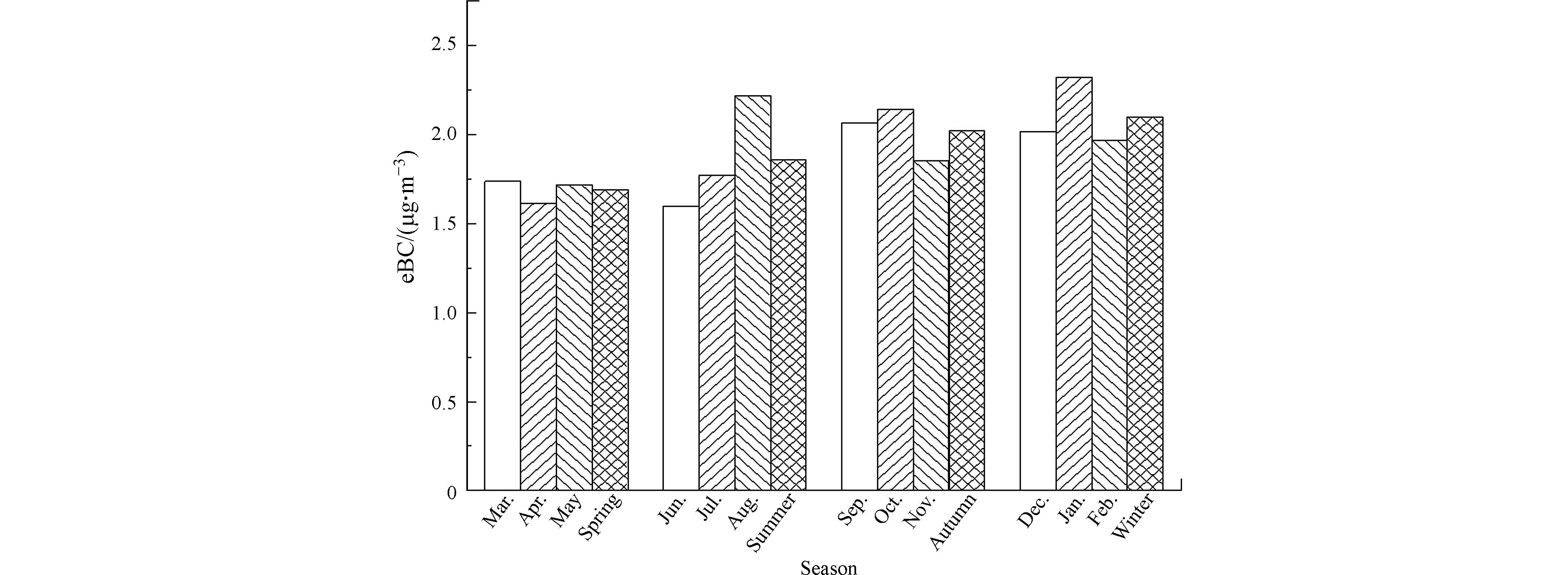
 下载:
下载:
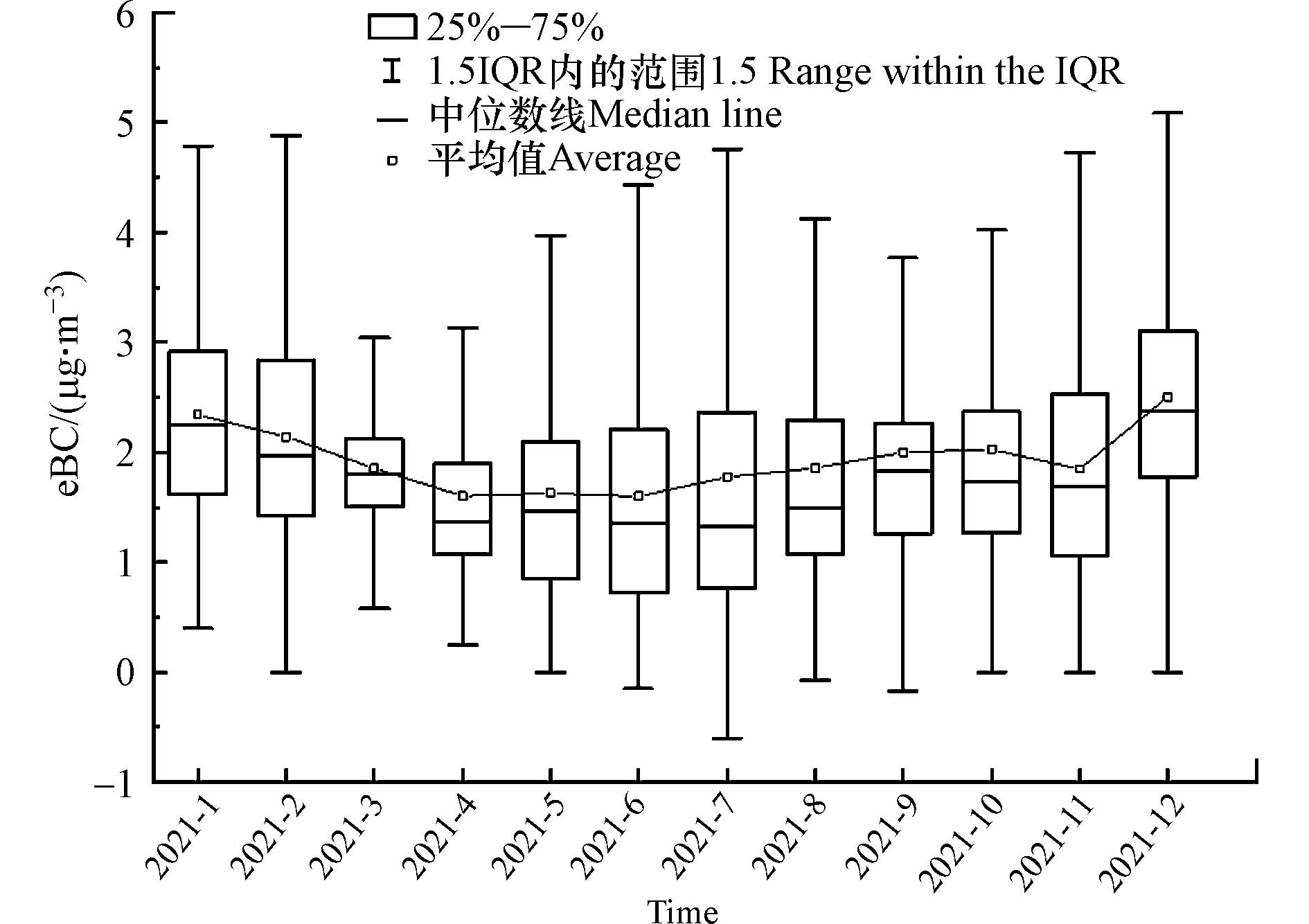



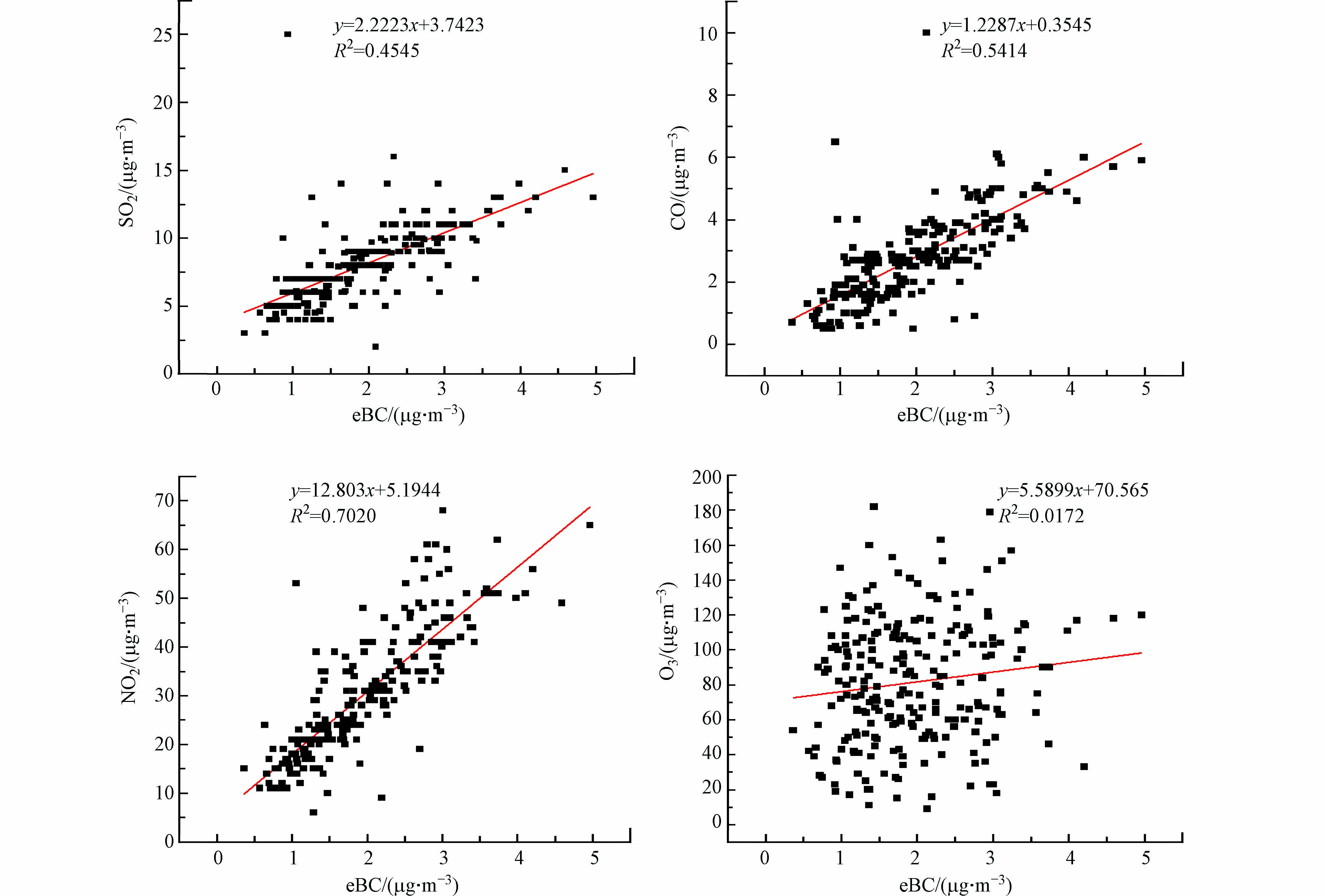
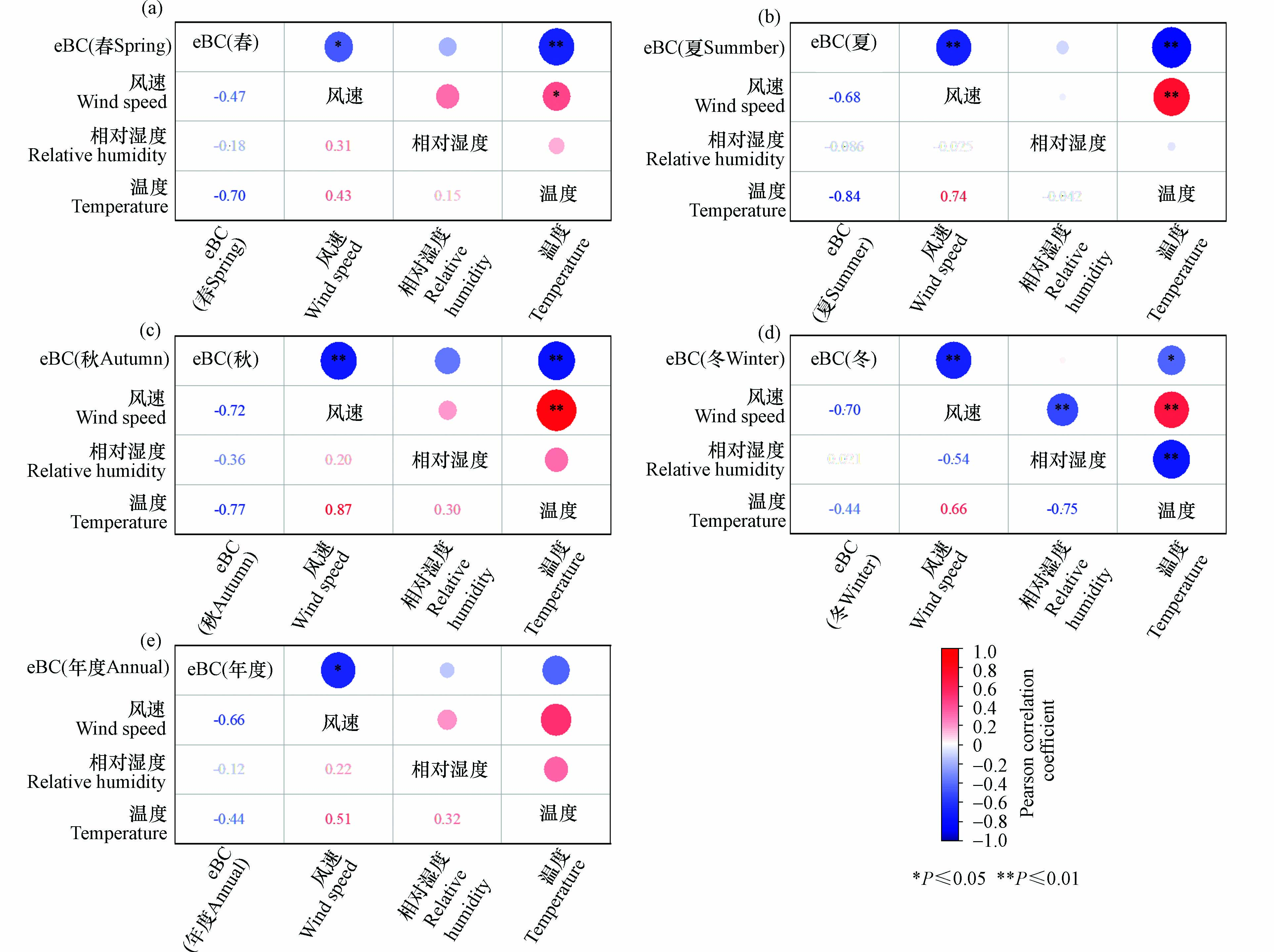


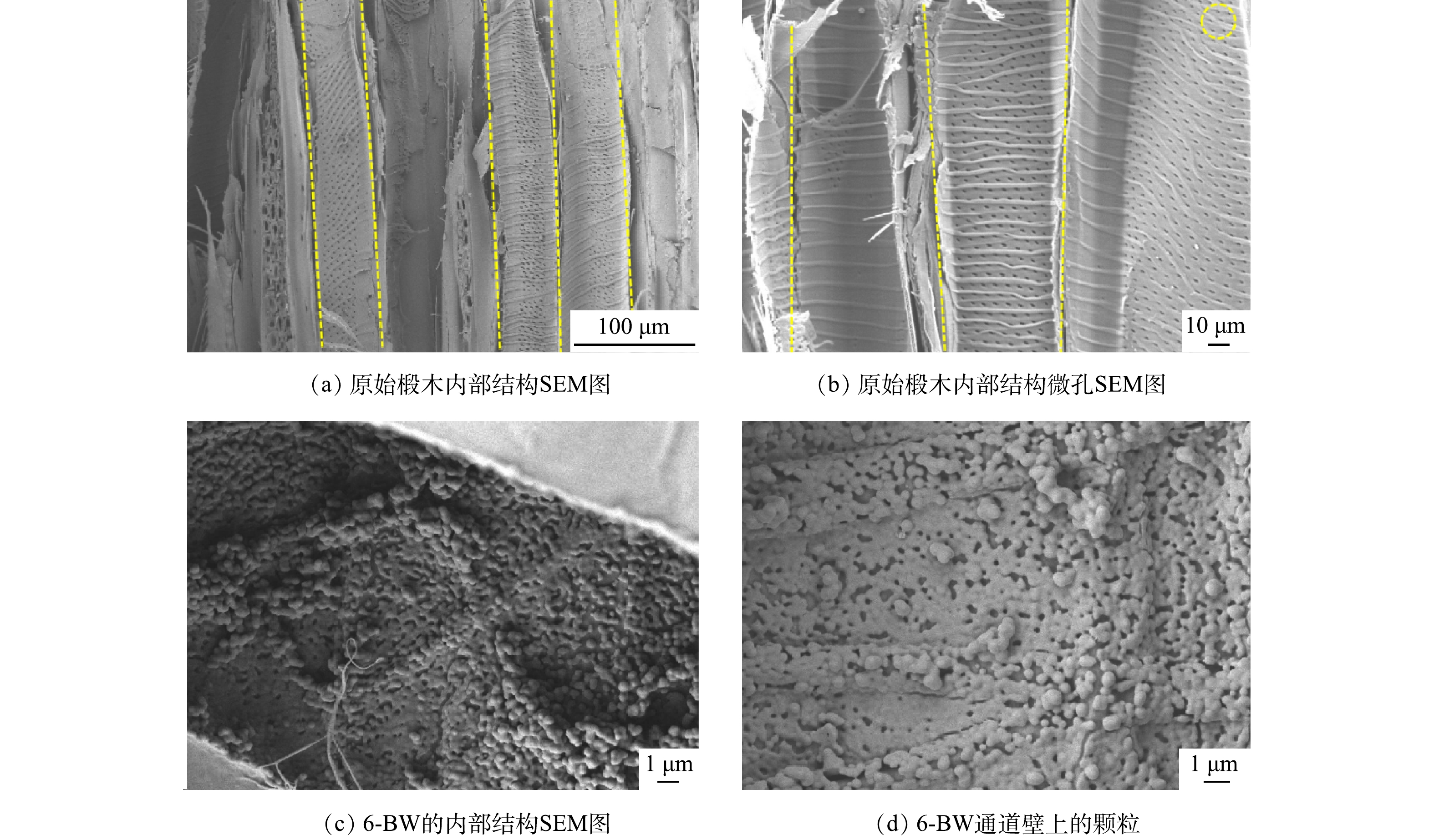
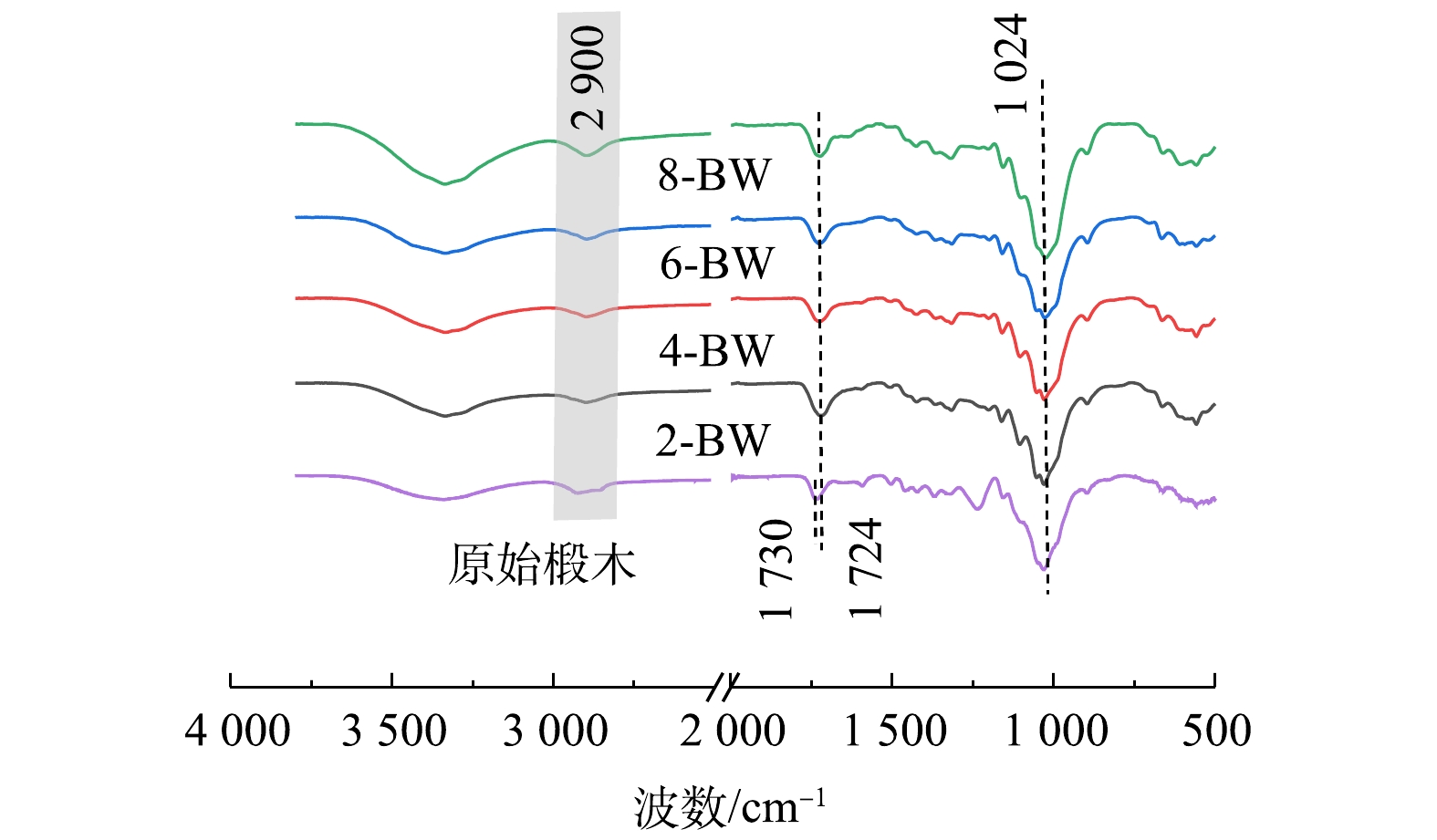
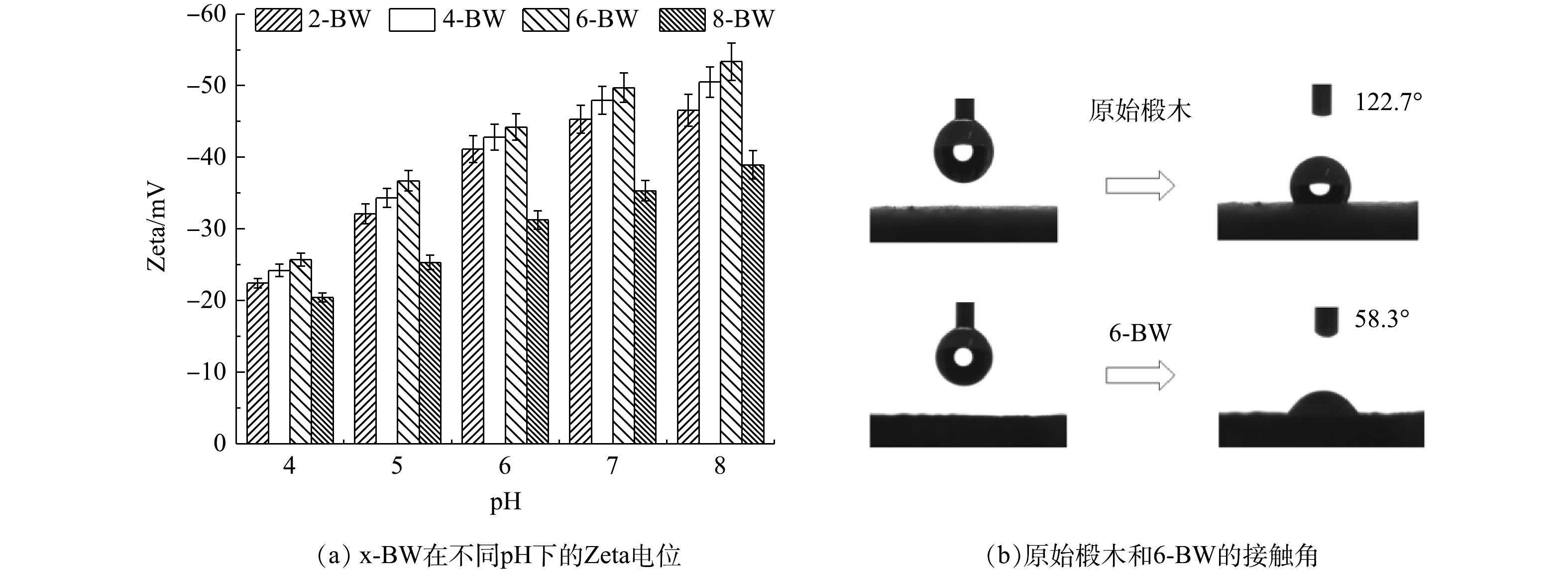
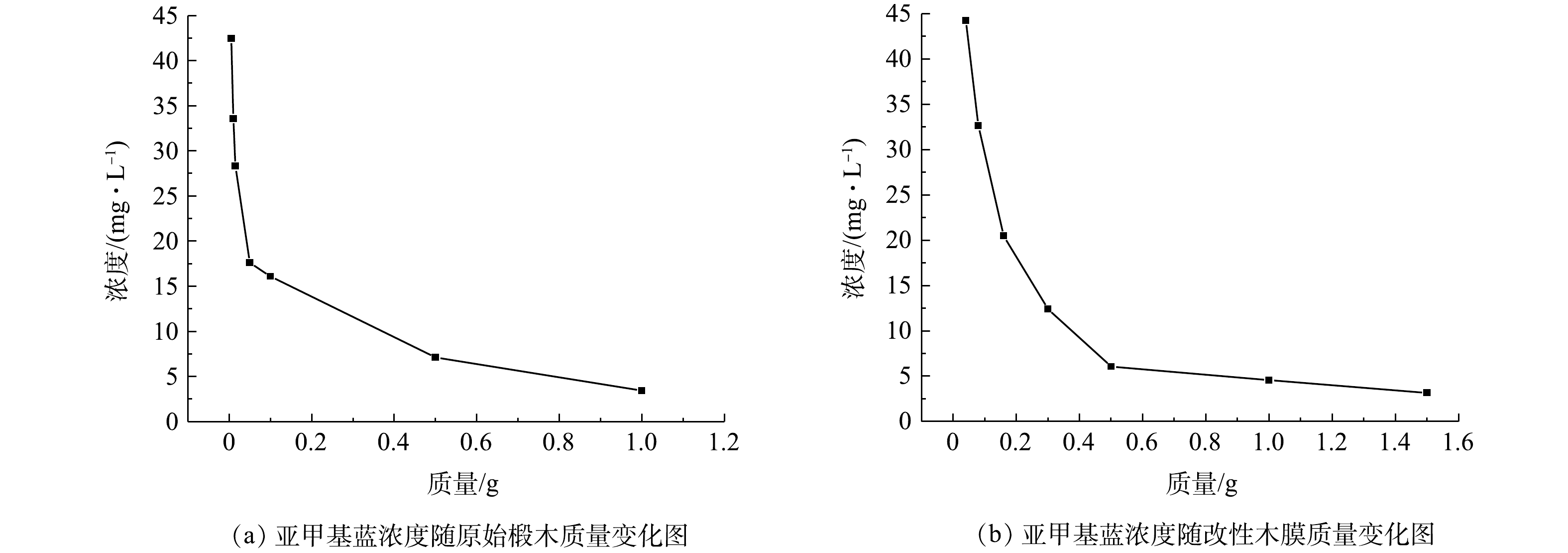
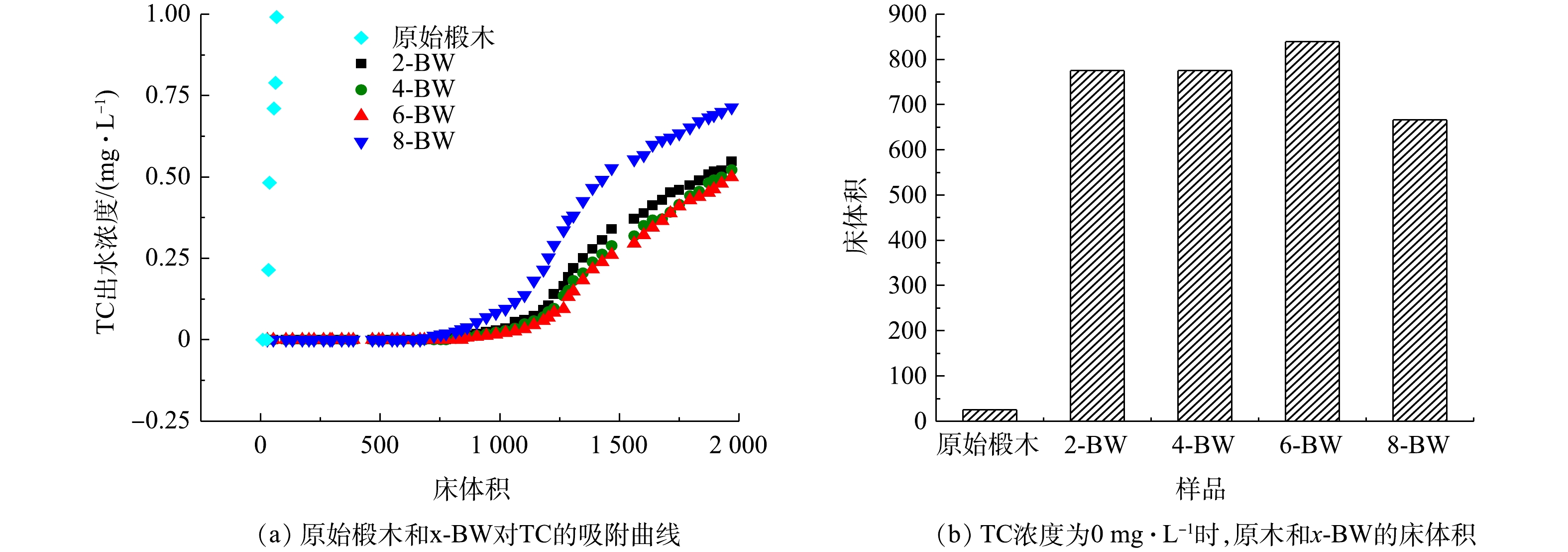

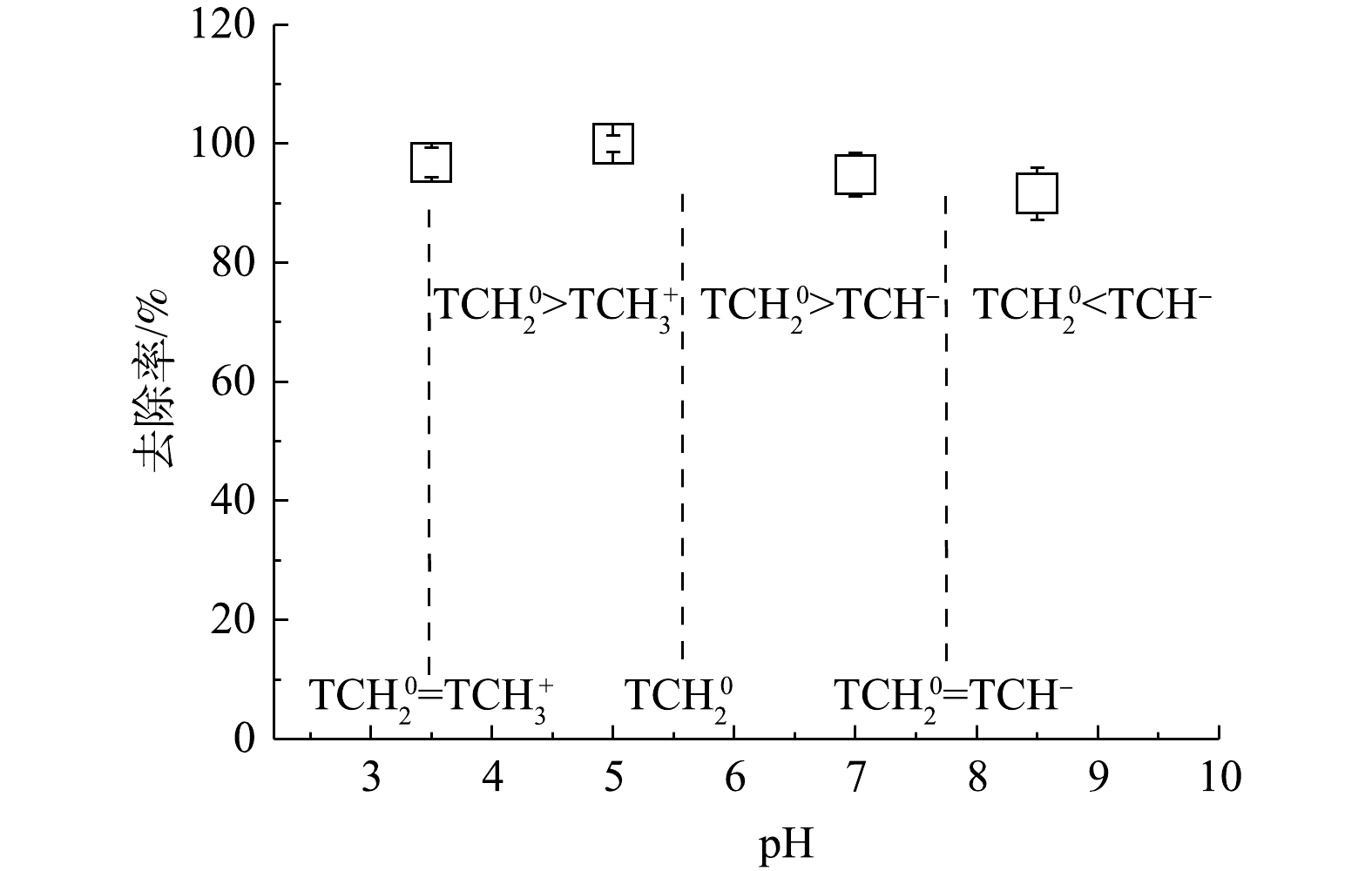


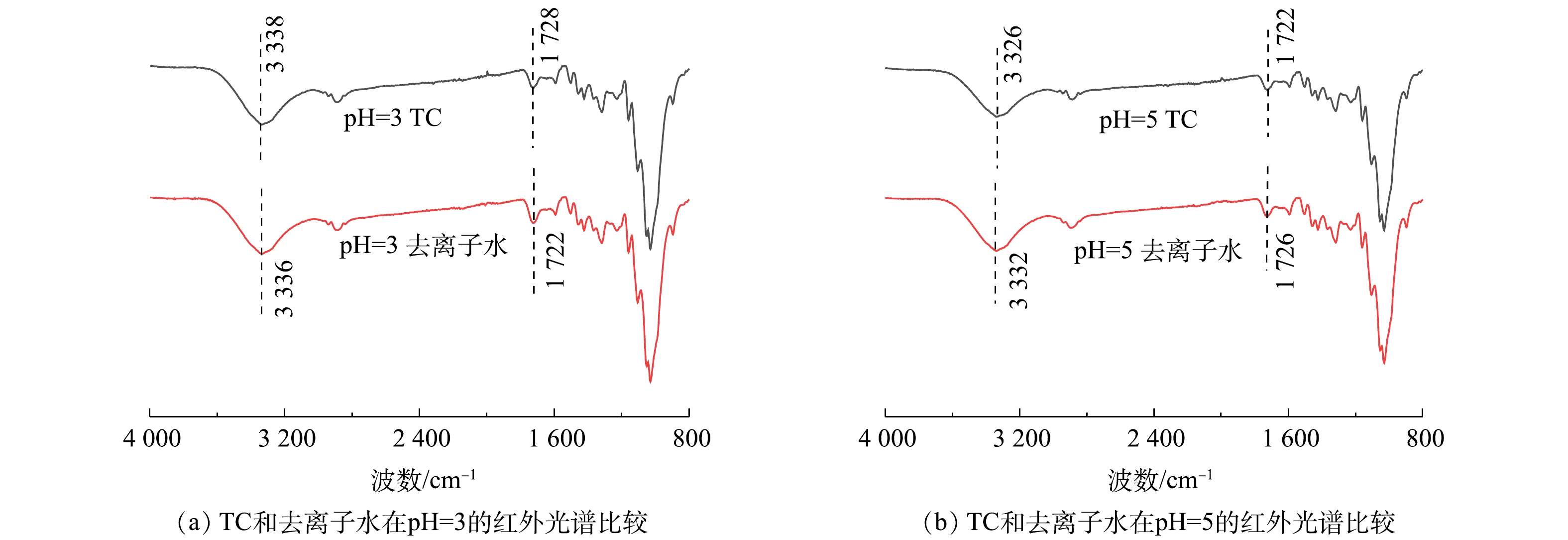
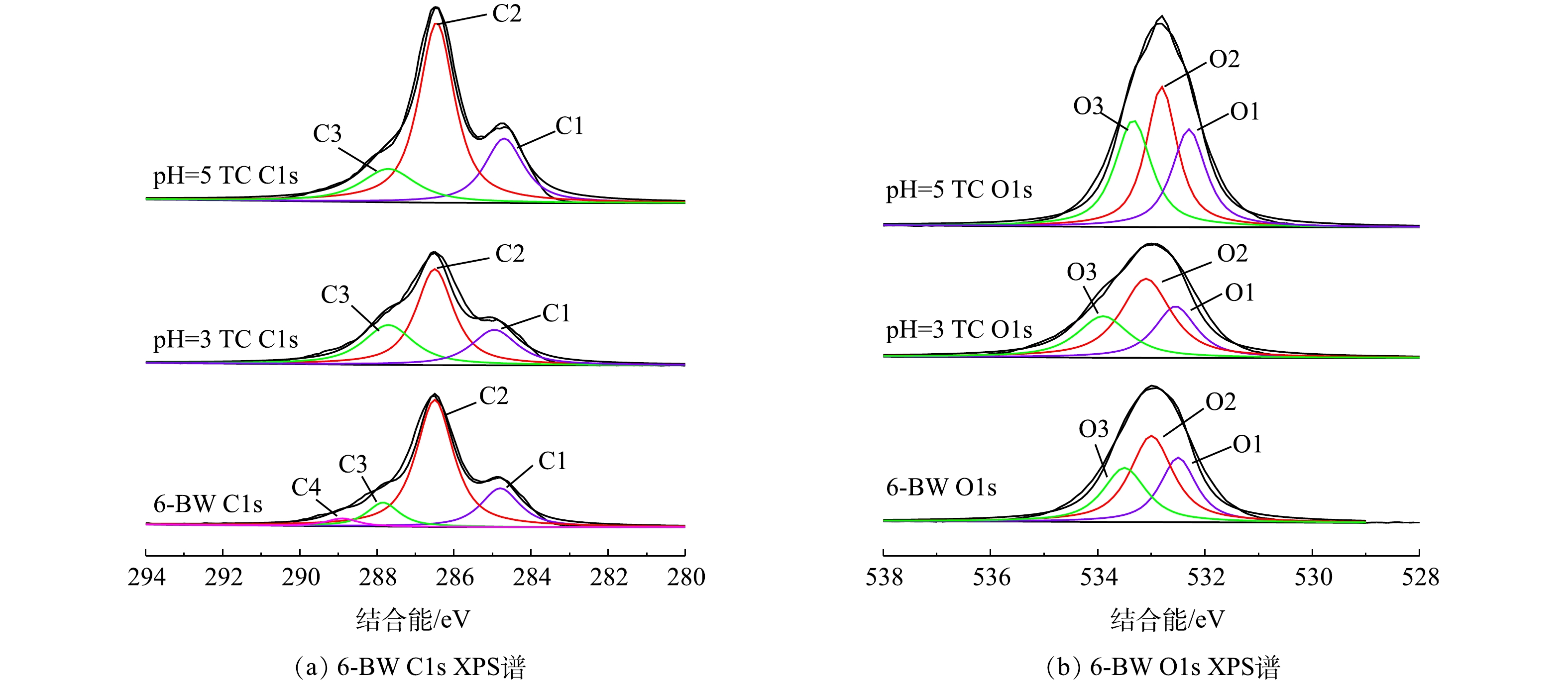
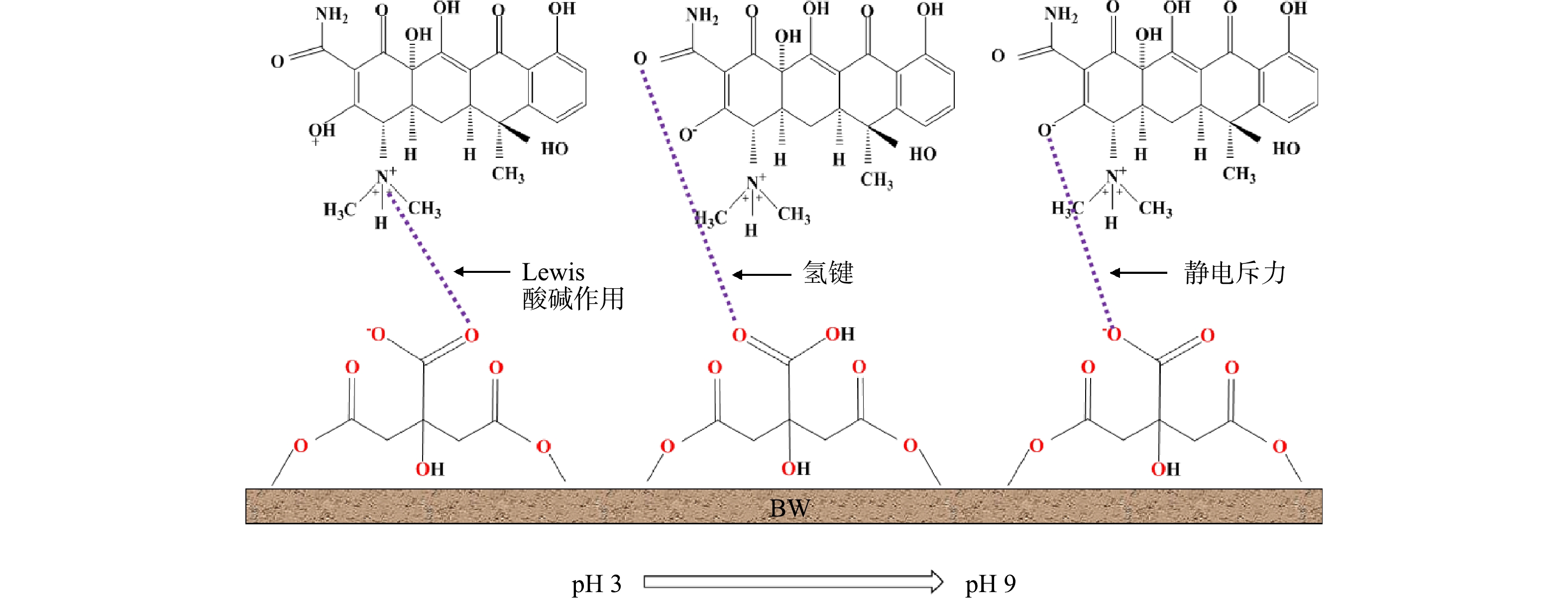
 本站查看
本站查看









